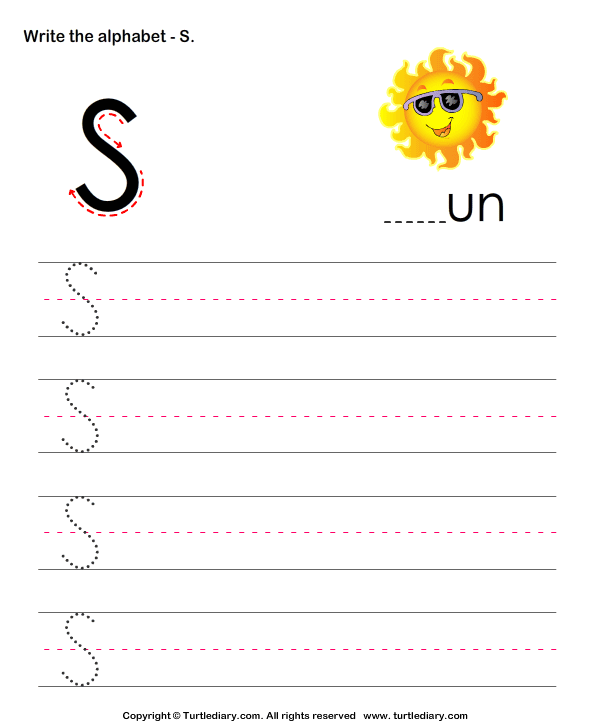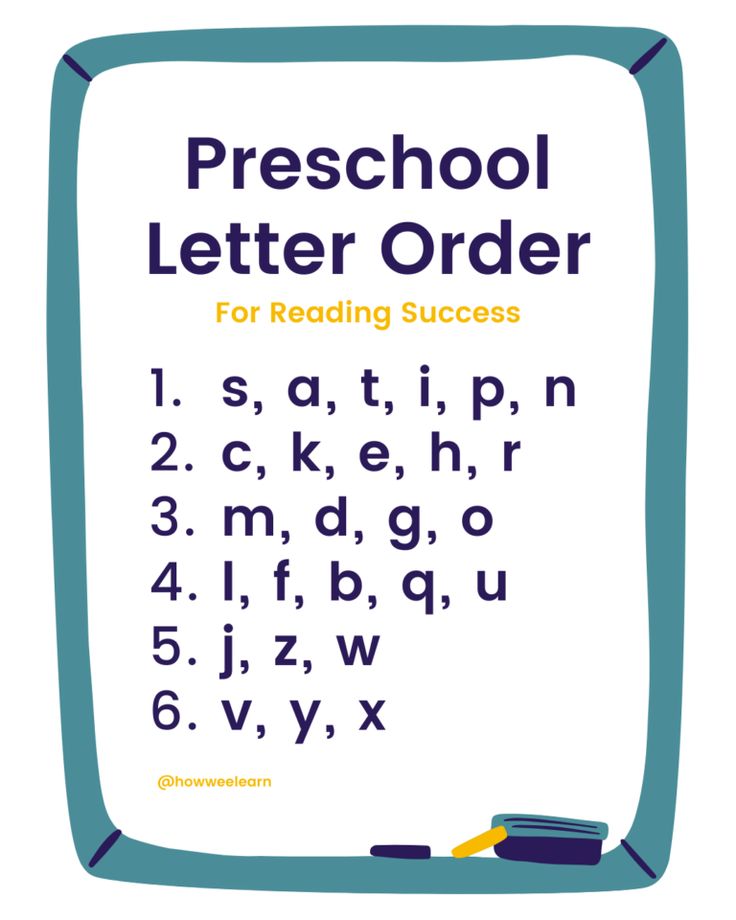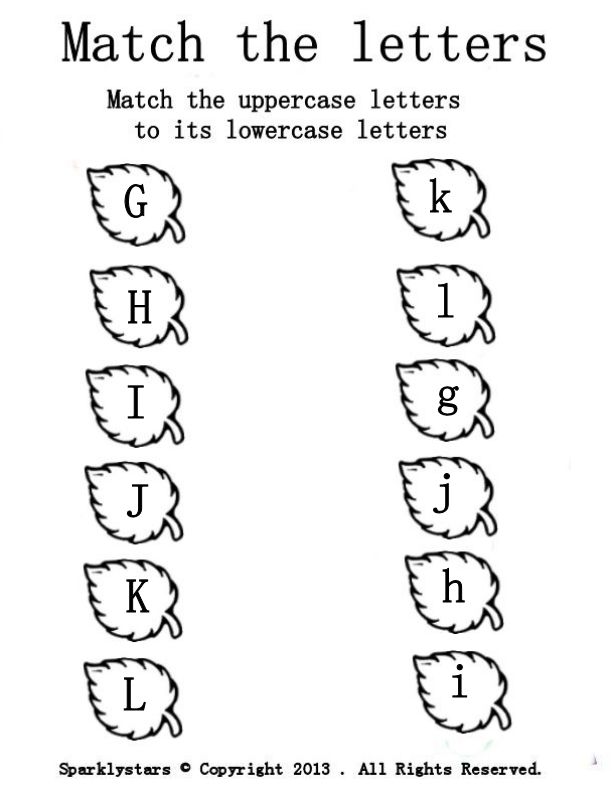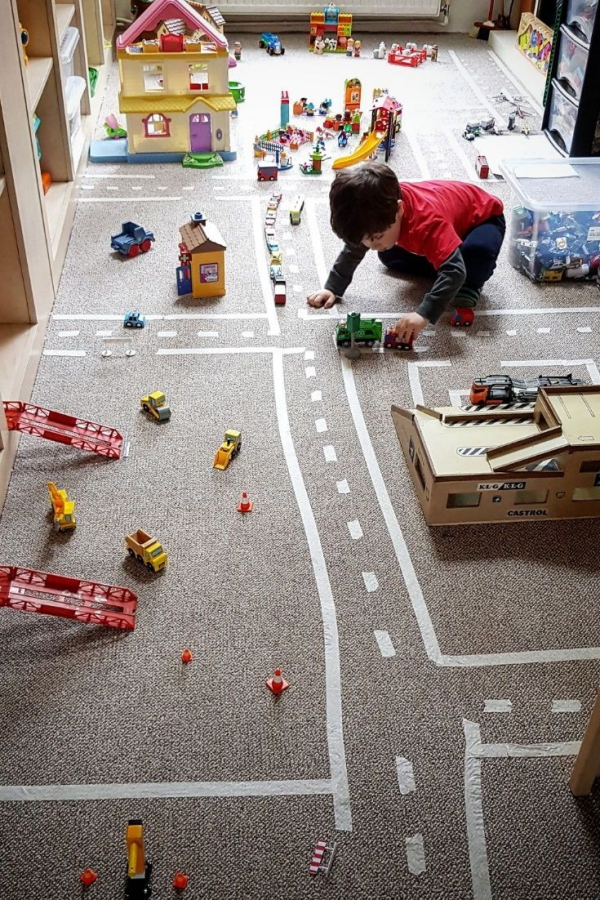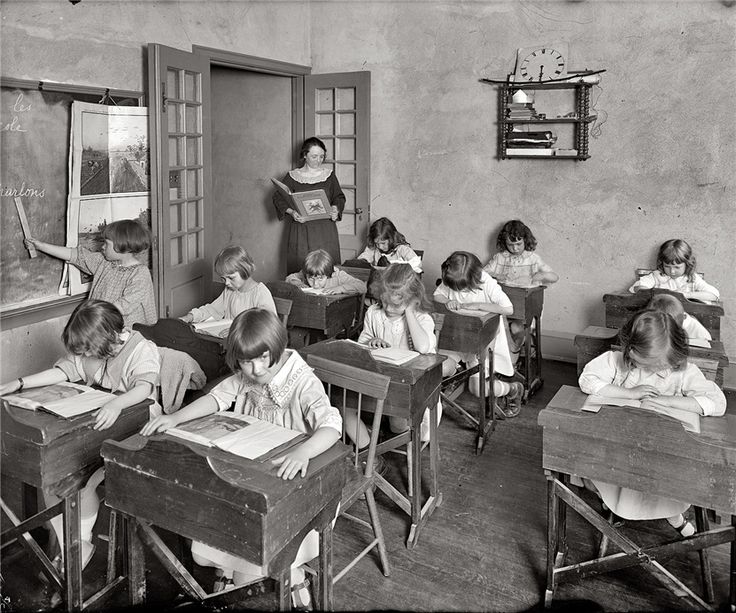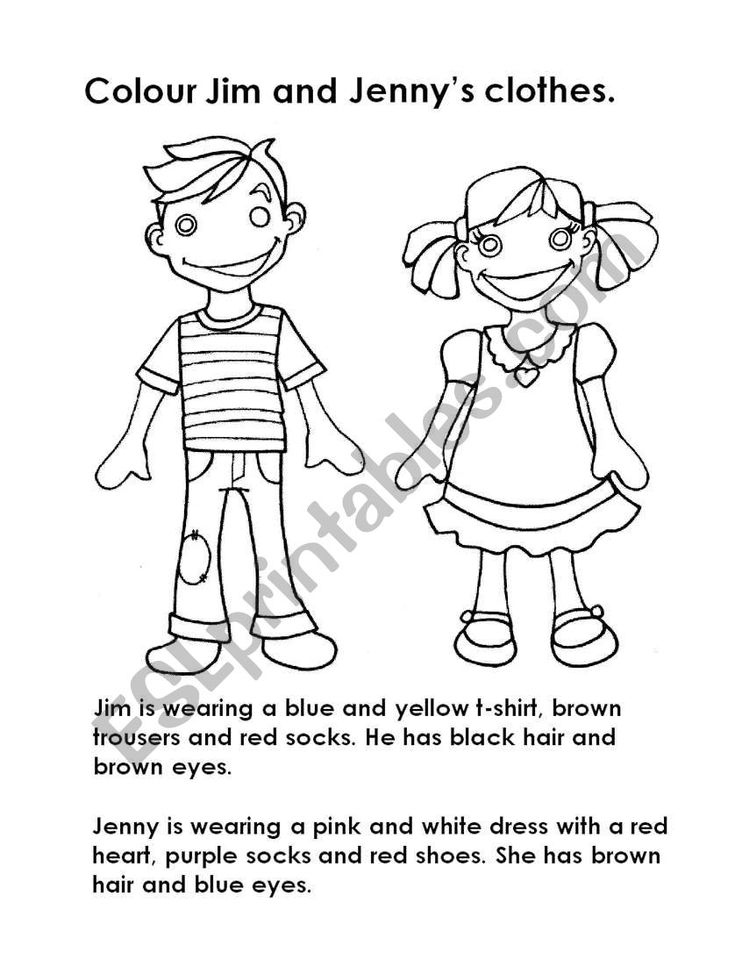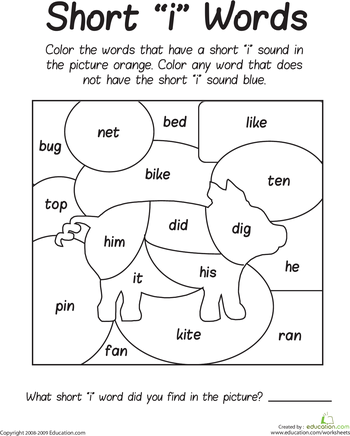Uppercase letters practice
A-Z Uppercase Lowercase Letter Tracing Worksheets
Learning the ABC and practice writing the alphabet is among the very first things that kids spend a lot of time with teachers and parents exploring, teaching and learning together. At this very early age, learning should be experienced through playing, practicing and repeating to make the whole process fun and easy for kids to absorb and remember.
In previous posts, I presented a lot of alphabet coloring pages to help kids recognize all the letters from A-Z through coloring activities with both uppercase and lowercase letters. In this post, I’m introducing to you series of alphabet manuscript tracing worksheets. Happy playing & learning!
Related worksheets:
NEW!
Cursive uppercase and lowercase handwriting practice sheets
Number practice worksheets
Free book report and writing worksheets
-
Blank Handwriting Practice Sheet
-
Blank Handwriting Practice Sheet with Guidelines
-
-
Alphabet Tracing Worksheet Letter A through Z Uppercase
-
Alphabet Tracing Worksheet Letter a through z Lowercase
-
Alphabet Tracing Worksheet Letter Aa through Zz Uppercase & Lowercase
Letter A Writing Practice Sheet
Letter B Writing Practice Sheet
Letter C Writing Practice Sheet
Letter D Writing Practice Sheet
Letter E Writing Practice Sheet
Letter F Writing Practice Sheet
Letter G Writing Practice Sheet
Letter H Writing Practice Sheet
-
Alphabet Tracing Worksheet Letter A
-
Alphabet Tracing Worksheet Letter B
-
Alphabet Tracing Worksheet Letter C
-
Alphabet Tracing Worksheet Letter D
-
Alphabet Tracing Worksheet Letter E
-
Alphabet Tracing Worksheet Letter F
-
Alphabet Tracing Worksheet Letter G
-
-
Alphabet Tracing Worksheet Letter H
-
Alphabet Tracing Worksheet Letter I
-
Alphabet Tracing Worksheet Letter J
-
Alphabet Tracing Worksheet Letter K
-
Alphabet Tracing Worksheet Letter L
-
Alphabet Tracing Worksheet Letter M
-
Alphabet Tracing Worksheet Letter N
-
Alphabet Tracing Worksheet Letter O
-
Alphabet Tracing Worksheet Letter P
-
Alphabet Tracing Worksheet Letter Q
-
Alphabet Tracing Worksheet Letter R
-
Alphabet Tracing Worksheet Letter S
-
Alphabet Tracing Worksheet Letter T
-
Alphabet Tracing Worksheet Letter U
-
Alphabet Tracing Worksheet Letter V
-
-
Alphabet Tracing Worksheet Letter W
-
Alphabet Tracing Worksheet Letter X
-
Alphabet Tracing Worksheet Letter Y
-
Alphabet Tracing Worksheet Letter Z
I’ve been using these alphabet tracing worksheets for my kids to practice writing when they were at preschool and kindergarten.
If you are a teacher or parent who happen to use the materials on this site and have feedback or suggestions for future materials, please feel free to add your comment using the form located at the bottom of the page. Much appreciated!
Posted in: Learning the alphabet, Tracing pages, Writing worksheets | Tagged: Alphabet tracing sheets, Featured posts | 8 Comments
Uppercase & Lowercase Letters Practice Worksheet
All Resources | Alphabet | Grade 1 | Kindergarten
ByKatie
This post may contain affiliate links. Please see our disclosure policy.
Get this free printable Alphabet worksheet focused on learning the 26 uppercase & lowercase letters! Students will practice identifying and matching uppercase and lowercase letters along a colorful rainbow using their letter and alphabet knowledge and visual discrimination skills.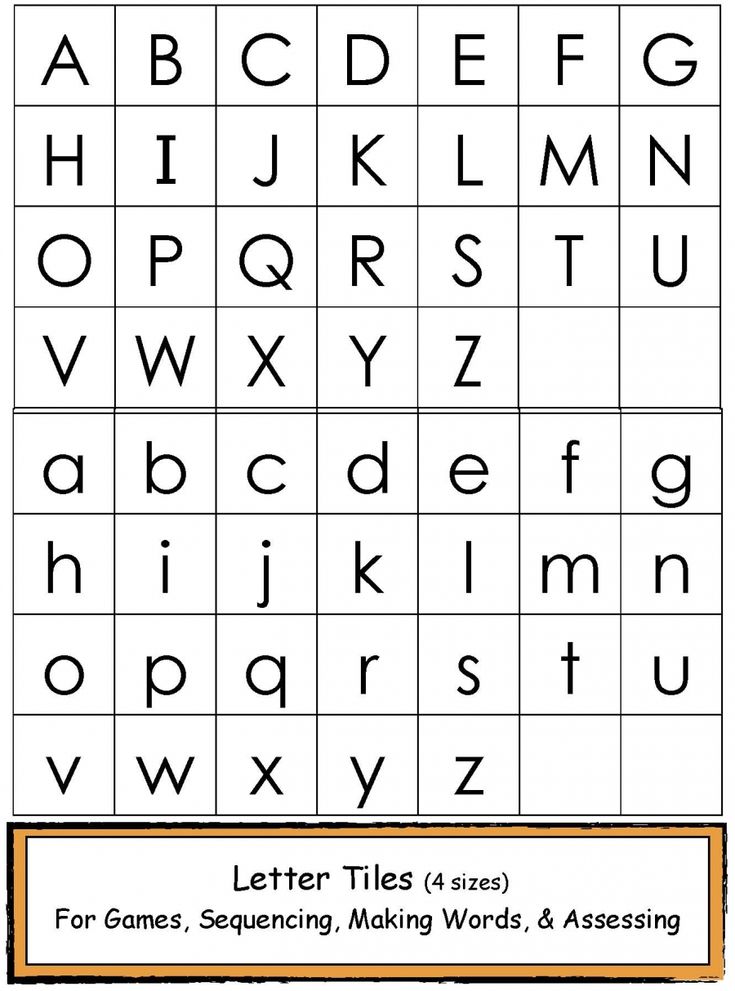
Get a new freebie every week!
Why We Love It
This letter matching worksheet is so much fun! Students will cut out the capital letters, mix them up, and then place them on top of the lowercase letter, matching them along the colorful rainbow in sequential order.
You can use it alongside our free Alphabet Arc, Letter Tracing Worksheets, and ABC Chart to help children master all 26 letters of the alphabet!
This will help children build automaticity in letter recognition. Children need to be able to quickly identify both uppercase and lowercase letters.
If you think about it, every proper noun, the word “I,” and every first word of a sentence will include a capital letter, so it’s important that letter recognition of both upper and lowercase letters become quick and effortless.
This activity is not only fun, but it intentionally targets foundational skills in alphabet and letter knowledge.
🌈 This worksheet is part of our popular rainbow-themed Alphabet Practice Worksheets, which comes with an alphabet strip, tracing arcs, and more uppercase and lowercase matching worksheets.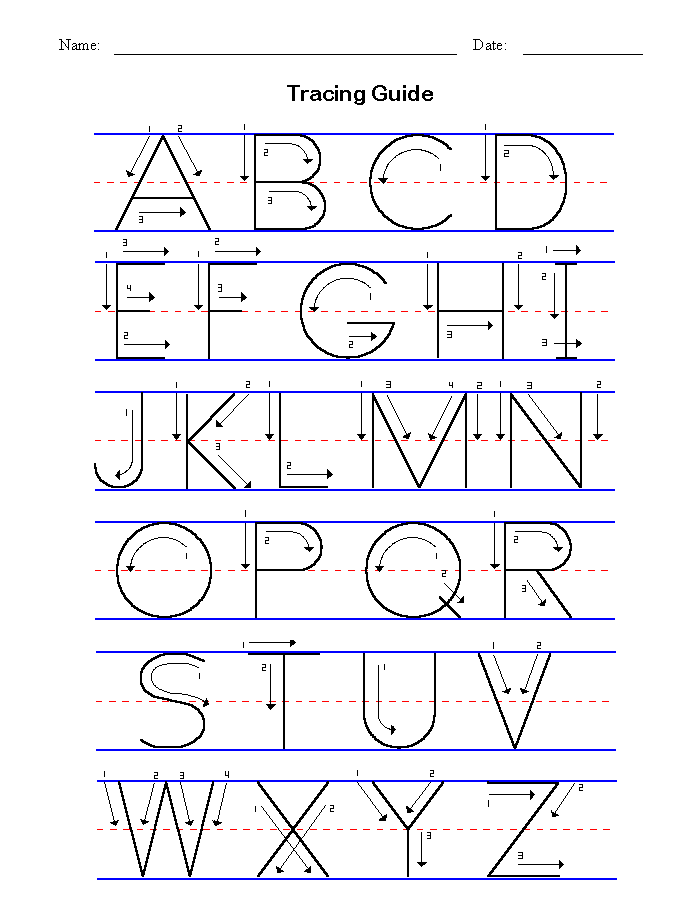
Using The Worksheets
This worksheet can be used in so many ways, including for letter identification, sequencing, upper and lowercase letter matching, and even letter sounds.
The most common use is for children to practice identifying and then matching all the lowercase and capital letters using the Alphabet Arc. But extend its use with these fun ideas:
- Letter Identification: Kids practice letter identification of both uppercase and lowercase letters, working to identify them quickly and effortlessly. If they need assistance, be sure an alphabet anchor chart is nearby.
- Sequencing: Kids need to learn that the 26 letters in the alphabet occur in a certain order, starting with the letter A all the way through Letter Z. We suggest teaching children to sequence the letters in ABC order, beginning with A and going all the way through Z. Kids should say each letter name as they sequence them.
- 1-1: When kids sing the ABC’s, they usually don’t make the connection that each letter name they sing has a corresponding written form (grapheme).
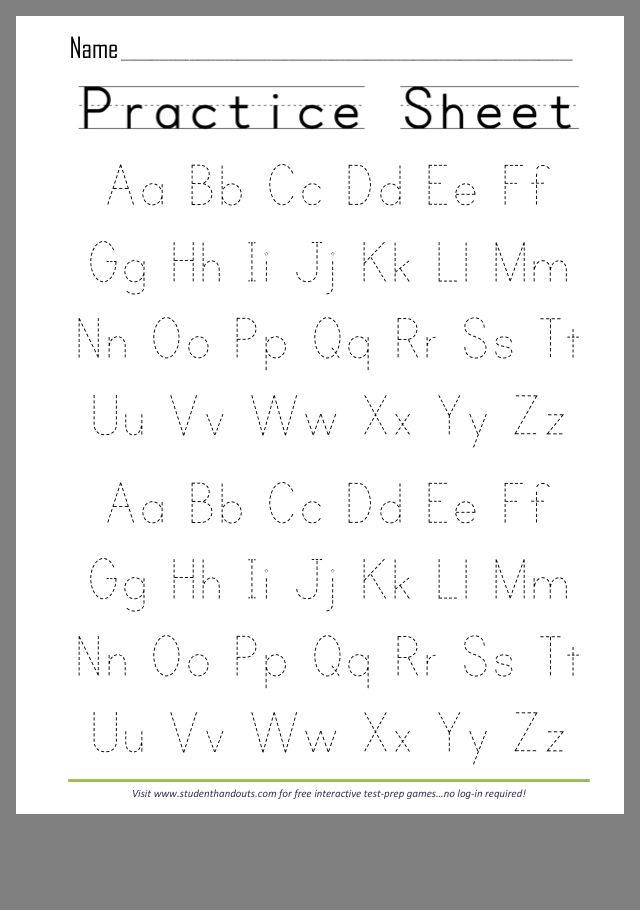 This worksheet is perfect to reinforce the correlation between the letter names and the written letter, both uppercase and lowercase.
This worksheet is perfect to reinforce the correlation between the letter names and the written letter, both uppercase and lowercase. - Letter Sounds: Kids can touch the letters and make the sounds that each letter makes. Or, play a game with your class. Say, “Find the letter that says /m/”, then kids quickly place their finger on the letter M and say, “M says /m/.“
👉 It’s important to note that vowels are red and consonants are black. You’ll notice the capital i looks exactly like the lowercase L. This might be confusing for kids, so be sure to explain the similarities and differences between these letters!
👉 The red and black letters will also help reinforce the concept that the alphabet is made up of two types of letters: vowels and consonants.
Expert Tips & Info
- This worksheet is appropriate for children in preschool, Kindergarten, and 1st Grade who are learning or have learned to recognize both capital and lowercase letters.
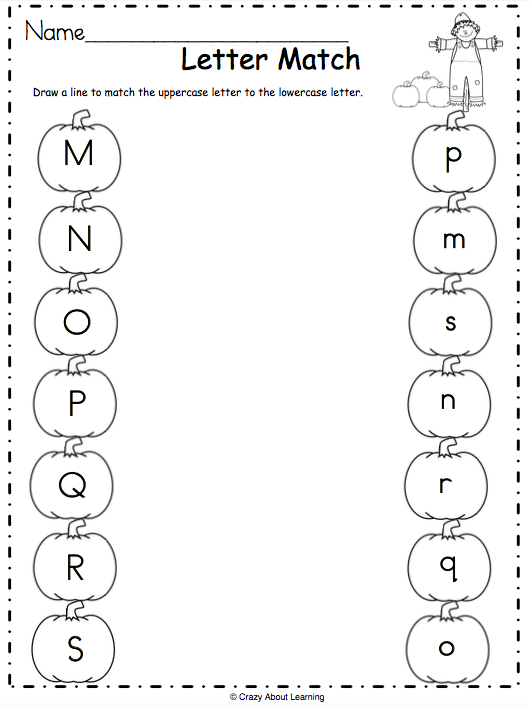
- For long-term use, laminate the worksheet and letters. You can then use velcro dots placed above each lowercase letter and on the back of each uppercase letter. Store the cut-out letters in a ziplock baggie and use for morning work or a center activity. You’ll be able to use it year after year!
- We recommend printing at 8.5 x 11 or larger.
Download & Print
We appreciate and welcome your feedback! Please leave a comment below and share your experience using this resource, or tag us on Instagram @literacylearn.
Get a new freebie every week!
TERMS: All resources and printables are designed for personal use only in your own home and classroom. Each person must visit this site and download their own free copy. Please do not photocopy, email, or reproduce our printable resources for other teachers, and please do not reproduce our printables on the web or save them to a shared drive. Instead, please share the resources with others by using the social share links provided or by distributing the link to the blog post itself. This allows us to keep making free resources for everyone! If you have any questions, please email us. Please see our Creative Credits page for information regarding the licensed ClipArt used in our resources. Thank you!
Instead, please share the resources with others by using the social share links provided or by distributing the link to the blog post itself. This allows us to keep making free resources for everyone! If you have any questions, please email us. Please see our Creative Credits page for information regarding the licensed ClipArt used in our resources. Thank you!
Cases of capitalization. » Rustuitors
Interactive exercise
If the exclamation point is after the invocation or interjection at the beginning of the sentence , then the next word is also capitalized. (Sanka! And I already thought that you were gone.)
If an exclamation mark comes after the interjection in the middle of a sentence , then the next word is capitalized. (And now, ah! for all his love fever, such an unbearable blow is being prepared for him)
Note: after an ellipsis that does not end a sentence, the first word is written with a lowercase letter.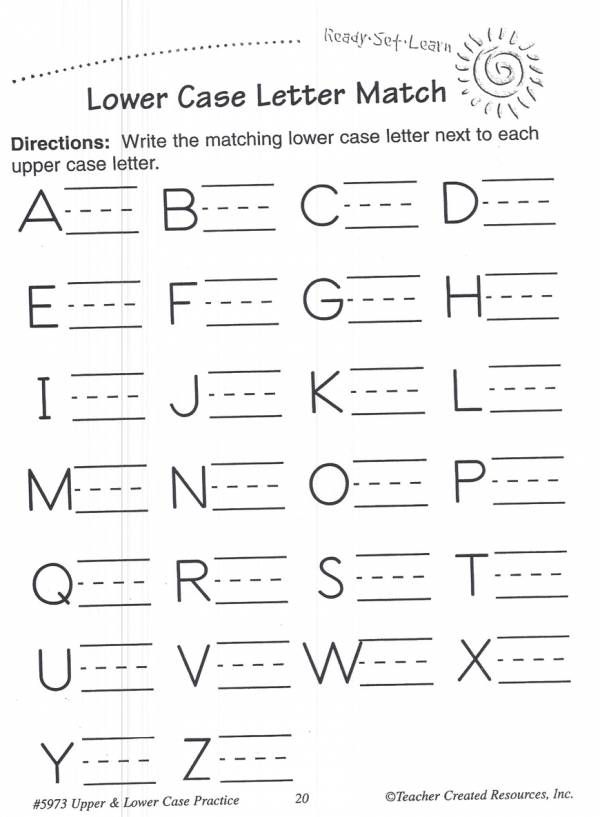 (I was just thinking... I wanted to maybe help you with something...)
(I was just thinking... I wanted to maybe help you with something...)
2. Names, patronymics, surnames, nicknames, aliases, nicknames of animals.
Nicknames are written without quotes. (Misha, Ivanov, Antosha Chekhonte, Masha the elephant)
3. Each part of complex surnames written with a hyphen.
(Mamin-Sibiryak, Saltykov-Shchedrin)
4. Double (triple) non-Russian names.
Notes 1: articles, prepositions, particles for non-Russian surnames and given names are written with a lowercase letter and do not add a hyphen (Max von der Grun, Ludwig van Beethoven, Antkan de Saint-Exupery, Monique de la Brichollie, etc.). e.)
Note 2: from the remaining parts of Arabic, Turkic, Persian names denoting social status, family relations, etc. (yeah, hell, al, as, ar, ash, bey, ben, zade, zul, ibn, kyzy, ogly, ol, pasha, ul, khan, shah, hell, el) are written with a lowercase letter and, as a rule, are attached to the next part with a hyphen.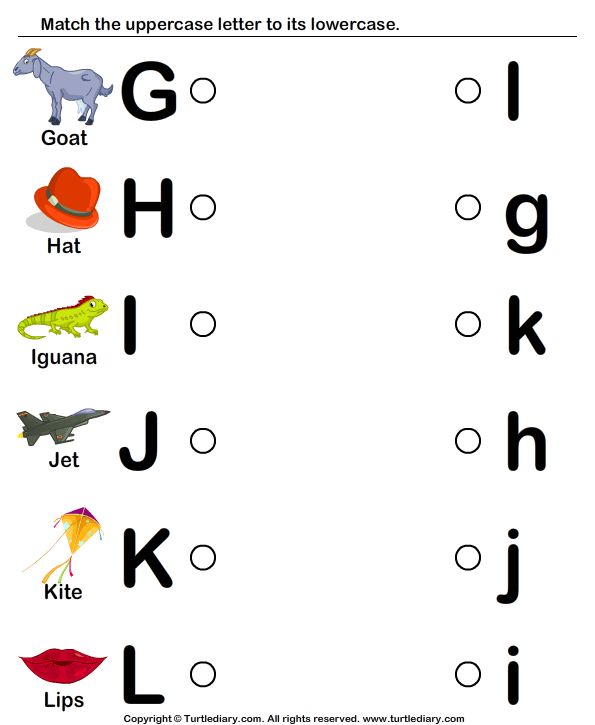 (Mohammed el-Kuni, Magamed-ogly, Suleiman Pasha, etc.)
(Mohammed el-Kuni, Magamed-ogly, Suleiman Pasha, etc.)
5. Standing before the surname O (after it is an apostrophe), joined by a hyphen Mak-, San-, Saint-, Saint-.
(O'Henry, Saint Martin, Saint Just, Mmac Dowell).
Note: In the names Don Quixote, Don Juan, both parts are written with a capital letter, however, if the word don is used in the meaning of "master", it is written separately and with a lowercase letter (don Basilio).
6. Chinese, Korean, Vietnamese, Burmese, Indonesian, Ceylonese, Japanese surnames and proper names, consisting of two (or more) parts.
Parts of such surnames and given names are written separately. (Ye Haobo, Wu Dau Ma, Pak Su Yong)
7. Ф amilias used in common nouns, but not passed into the category of common nouns.
(We are sure that we have our own Byrons, Shakespeares, Schillers)
However, proper names that have become common nouns are written with a lowercase letter (Lovelace, Alphonse, Vanka-Vstanka, Ivan-da-Marya, Hercules).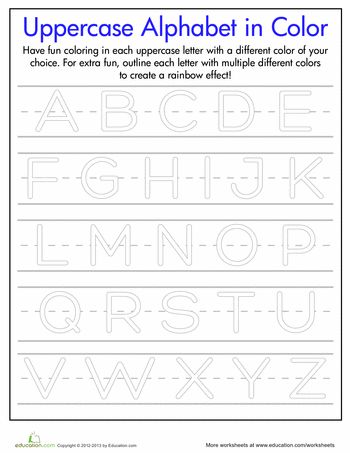
Note: the names of objects, plant species, units of measurement, formed from the names of persons, are written with a lower case letter (ampere, revolver, volt).
8. Individual names related to the area of mythology.
(Zeus, Mars, Brahma).
Generic names of mythological creatures (demon, devil, witch, siren, demon) are written with a lowercase letter
geographical names.
(Gooseberry Slava Nikolskaya, Nantes carrot, Abrau-Durso champagne, Aigeshat port)
10. Names of characters in fables, fairy tales and some other works.
(Serpent Gorynych, Zaika-Zaznayka, Bluebeard)
- Names of subjects of the Russian Federation (Republic of Altai, Krasnodar Territory, Amur Region, Koryak Autonomous Okrug).
- Common nouns in geographical names (Czech Forest (mountain range), Champs Elysees (street in Paris), Nikitsky Gates).
- Titles, ranks and positions in geographical names (Queen Charlotte Islands).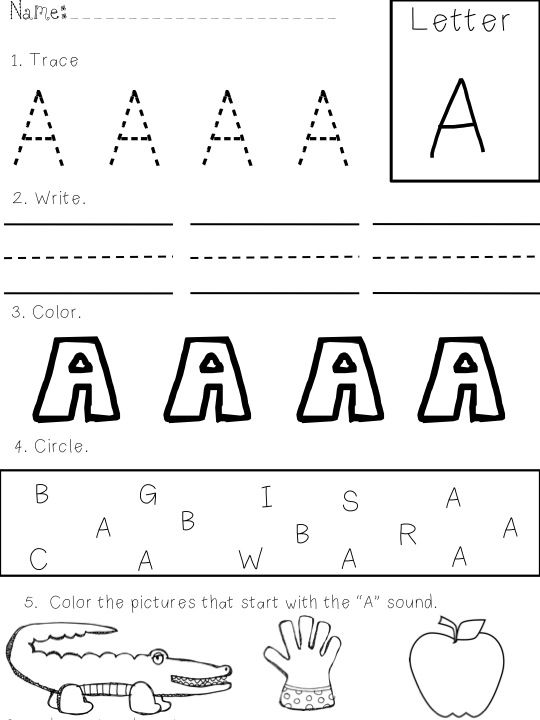
- Foreign language names included in geographical names (Yoshkar-Ola (ola-mountain).
- Articles, prepositions, particles at the beginning of foreign geographical names. These parts are appended with a hyphen. (San Francisco, Santa Cruz). If these parts are in the middle, then they are written with a lowercase letter and are connected by two hyphens (Rostov-on-Don, Dar es Salaam).
- Names of the countries of the world, when they are part of the territorial names (Far East, Far North).
- Official names of states.
- In the names of administrative-territorial units of foreign states , all words are written with a capital letter, except for generic designations (Sichuan province, Tuscany region, South Carolina).
12. Individual astrological names.
(Saturn, Galaxy).
Generic concepts are written with a lowercase letter (the constellation Canis Major, the Andromeda nebula)
13.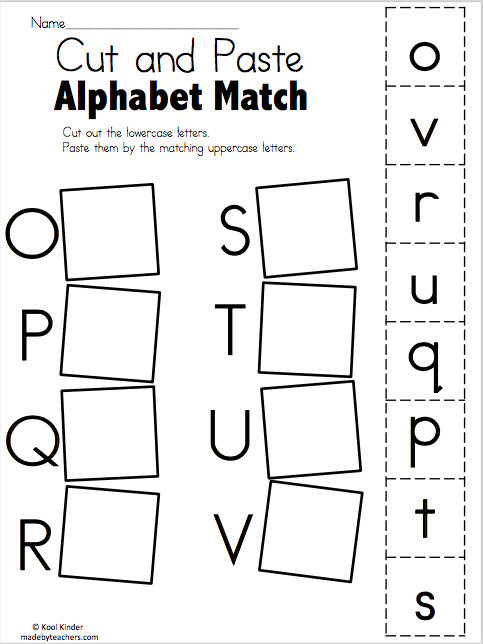 Names of historical eras and events, all proper names in compound names.
Names of historical eras and events, all proper names in compound names.
(Era of Enlightenment, earlier Renaissance, Time of Troubles)
14. The first word and all proper names in the names of congresses, congresses, conferences.
(April Conference, World Congress of Trade Unions)
15. The first words in the names of some political, cultural, sports and other events of national or international importance.
(Football World Cup, Goodwill Games).
16. The first word and proper names in the names of holidays, popular movements, significant dates.
(Victory Day, New Year, International Women's Day).
17. The following names associated with religion:
- The word God and the names of God in all religions , the word Mother of God, all words used instead of the word God , Brahma, Vishnu, Perun, Zeus, the Creator), as well as all adjectives formed from the word God (God's grace).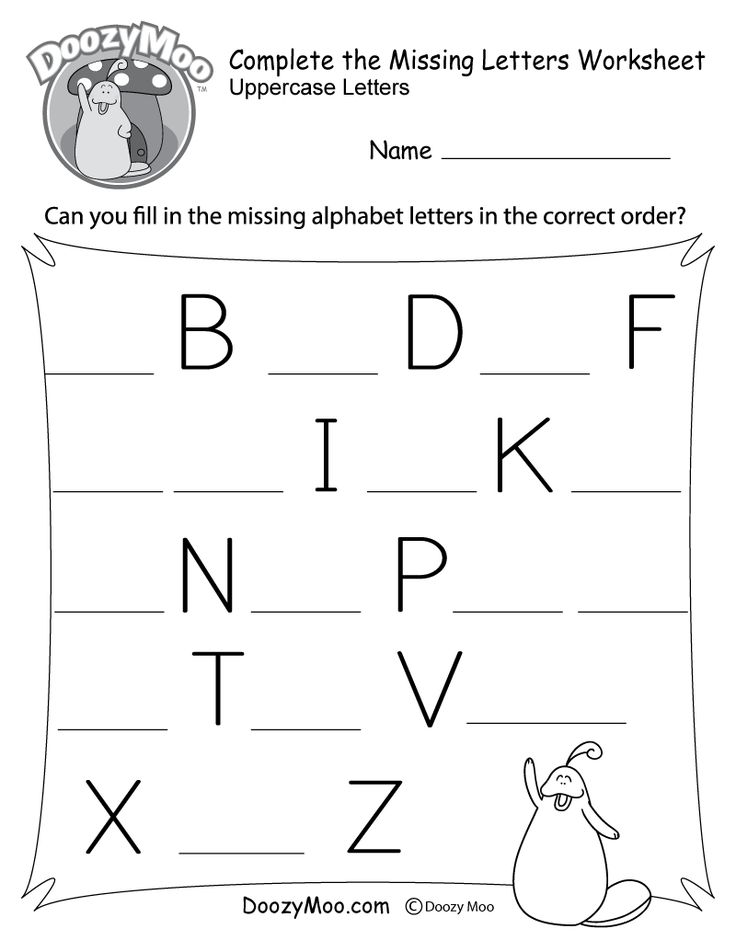
- All proper names of the founders of religions (Buddha, Mohammed, Mohammed), apostles, prophets, saints (John Chrysostom, Elijah the Prophet, Nicholas the Wonderworker, George the Victorious).
- Common names in the meaning of proper (Heaven; Creation of the World; Church, Orthodox Church).
- The first word and proper names in the names of religious Orthodox holidays (Easter, Christmas, Ramadan, Hanukkah) and the names of fasts (Lent).
- All words in the names of the highest bodies of church authority (Council of Bishops, Holy Synod). names of world organizations , (World Council of Churches) are written in the same way.
- All words (except official words and pronouns) in the names of senior officials (His Holiness Patriarch of Moscow and All Rus', Pope of Rome). The names of other positions and titles are written with a lowercase letter.
- Cult book titles (Bible, Holy Scripture, Koran, Talmud).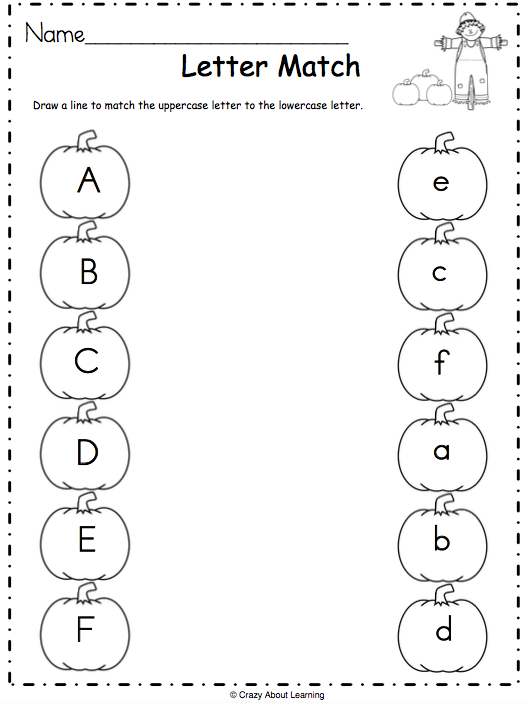
18. The following names of authorities, institutions, organizations, authorities:
- Names of the largest international organizations. United Nations, Security Council, Red Cross Society).
- Names of higher state institutions and public organizations in Russia. (Federation Council, Supreme Court of Russia).
Note: fluctuations are observed in the spelling of some names (Federal Assembly (Federal Assembly), State Duma (State Duma), Constitutional Court (Constitutional Court).
- The first word in the names of central institutions (Ministry of Foreign Affairs, Central Bank of the Russian Federation)
- The first word in the names of international and foreign central public and professional organizations and state institutions (World Federation of Trade Unions, Polish Sejm, National Assembly of France) 9(Parliament, Lower House of Lords, Congress) Indian National Congress
Note: non-official titles are capitalized (Republican and Democratic parties in the USA, Conservative Party in England, Labor Party).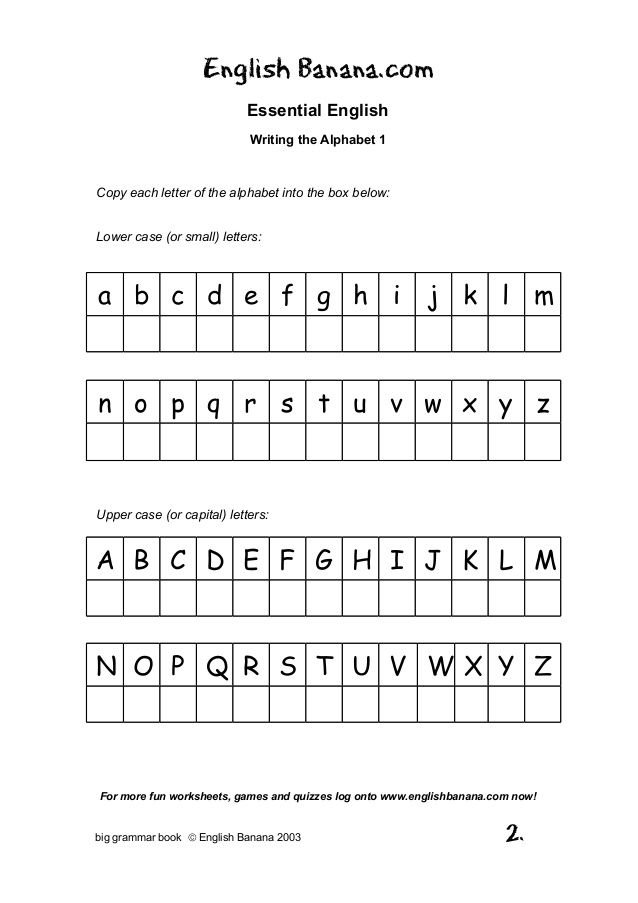
- The first word in the official names of institutions of local importance (Moscow Regional Executive Committee of the Council of People's Deputies, Vyborg District Department of Public Education).
- The first word in the names of scientific institutions and educational institutions (Russian Academy of Sciences, Institute of International Relations).
- The first word and proper names in the names of cultural institutions (Bolshoi Theatre, Tchaikovsky Concert Hall, Museum of Folk Art).
- The first word in the names of industrial and commercial enterprises (State Department Store, House of Books, House of Shoes).
- The first word and proper names in the names of enterprises, firms, banks in quotation marks , etc. (factory "Tryokhgornaya manufactory", joint-stock company "Russian Gems").
Note : geographical definitions for such names are usually written with a lowercase letter (Moscow plant "Compressor")
19.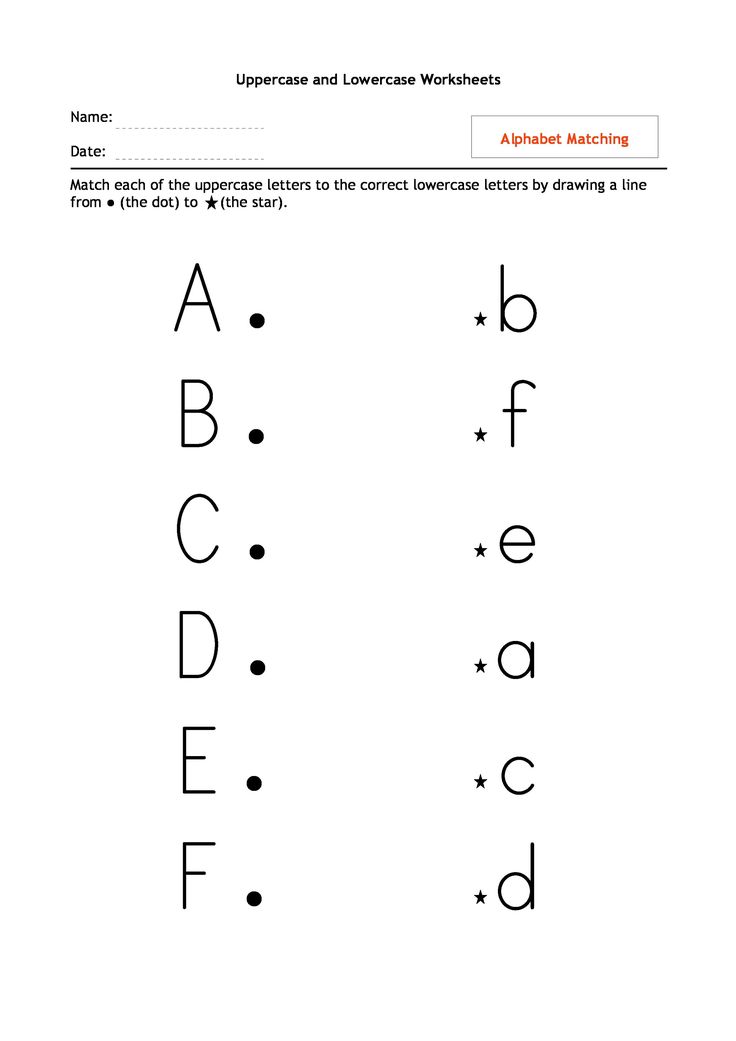 The first word and proper names in the names of the most important documents, state laws, ancient monuments, objects and works of art.
The first word and proper names in the names of the most important documents, state laws, ancient monuments, objects and works of art.
(Constitution of the Russian Federation, Magna Carta, Peace Pact, Declaration of Independence, Chopin's First Ballad).
However, at the present time the spellings tsar-bell, tsar-cannon (with a lowercase letter) have become entrenched.
Note : style names are written with a lowercase letter (Gothic, Rococo, Baroque, Empire).
20. Names of the highest positions and highest honorary titles in Russia and the former Soviet Union.
(President of the Russian Federation, Vice President of the Russian Federation, Hero of the Russian Federation, Hero of the Soviet Union, Hero of Socialist Labor).
The names of other positions and titles are written with a lower case letter (Minister of Education of the Russian Federation, President of the Russian Academy of Sciences, People's Artist of the Russian Federation), as are the names of titles and positions in foreign countries and in international organizations (Emperor of Japan, Queen of the Netherlands, Secretary General of the United Nations ).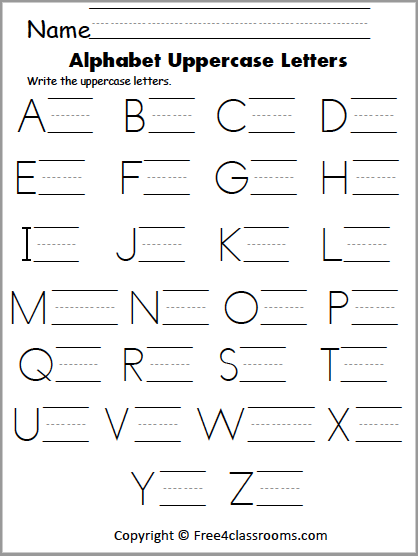
21. All words in the names of orders of Russia and the former Soviet Union, except for the words order and degree (Order of Lenin, Order of the White Eagle).
Note : In foreign names, only the initial word of the name is written with a capital letter (Legion of Honor Order, Iron Cross)
22. Names of awards.
(Nobel Prize, Goncourt Prize)
23. The first word and proper names in the names of literary and musical works, mass media.
Names are written in quotation marks.
(the novel "War and Peace", the opera "The Queen of Spades", the Ostankino TV and Radio Company)
Note: the names of literary works used in a figurative sense are written without quotation marks with a lowercase letter. (Our odyssey was drawing to a close.)
24. Names of literary works consisting of two words with the union OR.
(opera "Leonore, or Conjugal Love", comedy "Twelfth Night, or As You Like")
25.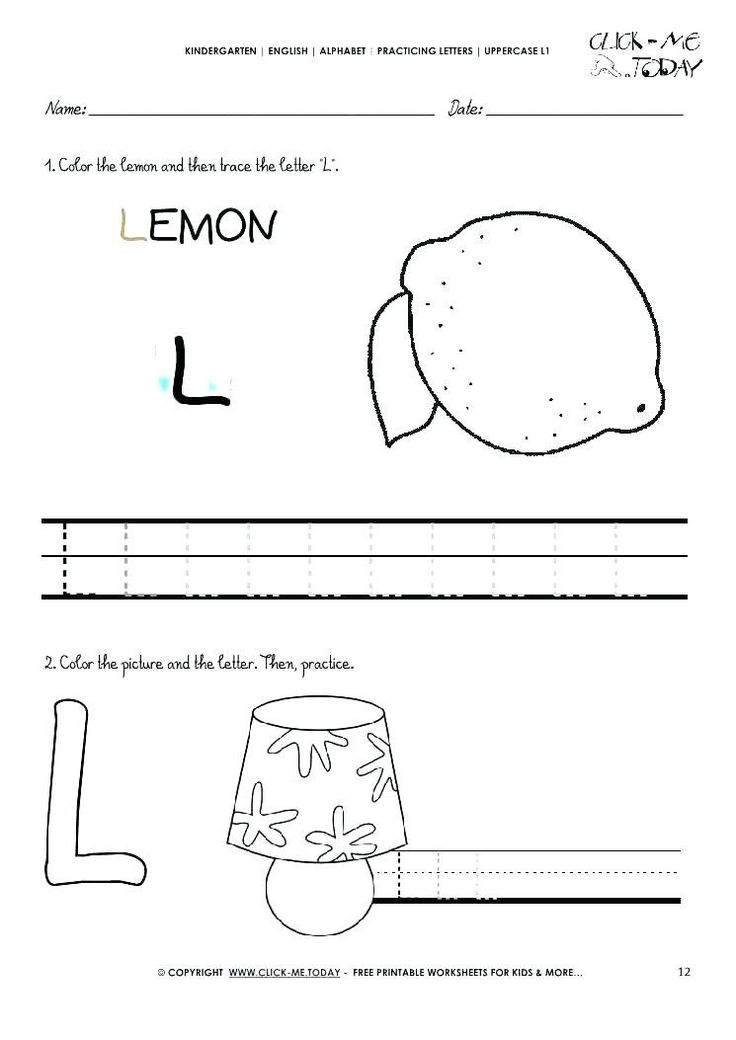 The first word and proper names in the names of foreign-language press organs.
The first word and proper names in the names of foreign-language press organs.
(New York Times, Daily Express, Neos Agonas).
In foreign-language names of information agencies, all words, except for the generic one, are capitalized (United Press International Agency)
26. Compound words denoting the names of institutions and organizations .
(Mossovet, Petrosovet, Vnesheconombank (but: city council, district military commissariat, executive committee and similar generic names).
27. Abbreviation read by the name of the letters.
(CIS, RF, PE, CIA, FBI).
28. Abbreviation read by sounds, if it is formed from one's own name
(UN, ITAR-TASS, NASA)
Such abbreviations are written in lower case if they are formed from a common name .
The capitalization of the abbreviations HPP (hydroelectric power plant), NPP (nuclear power plant, ZhEK (housing and maintenance office), power transmission line (power line) has been fixed in capital letters.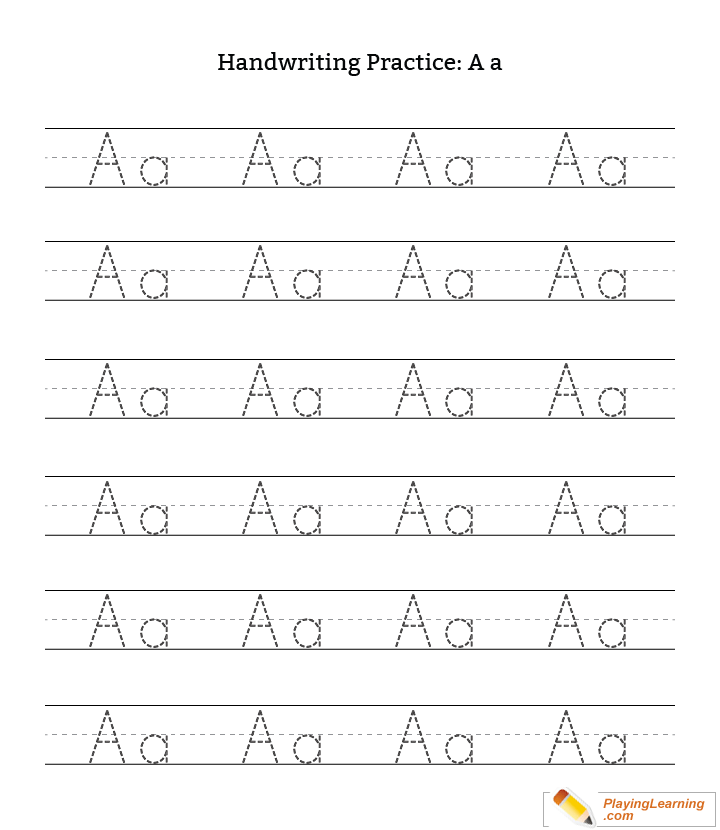
(BBC, CNN)
30. Conventional proper names in the texts of official communications, contracts and other documents
(High Contracting Parties - in acts of international importance; Ambassador Extraordinary and Plenipotentiary - in official communications; Author, Publishing House - in copyright agreements).
Note: in special stylistic usage, the words Motherland, Fatherland, Man, Faith, Hope, Love, Reason, Wisdom, Victory, etc. are written with a capital letter. The Spelling Commission of the Russian Academy of Sciences dealt with the rules for the use of capital letters. As its chairman Aleksey Shmelev told the Pravmir.ru portal, it will now be possible to use capital letters according to more liberal laws.
"Capital letters are used in two cases. In one case, depending on the position in the text: at the beginning of a sentence, for many poets at the beginning of a line of poetry, sometimes headings are written in capital letters alone.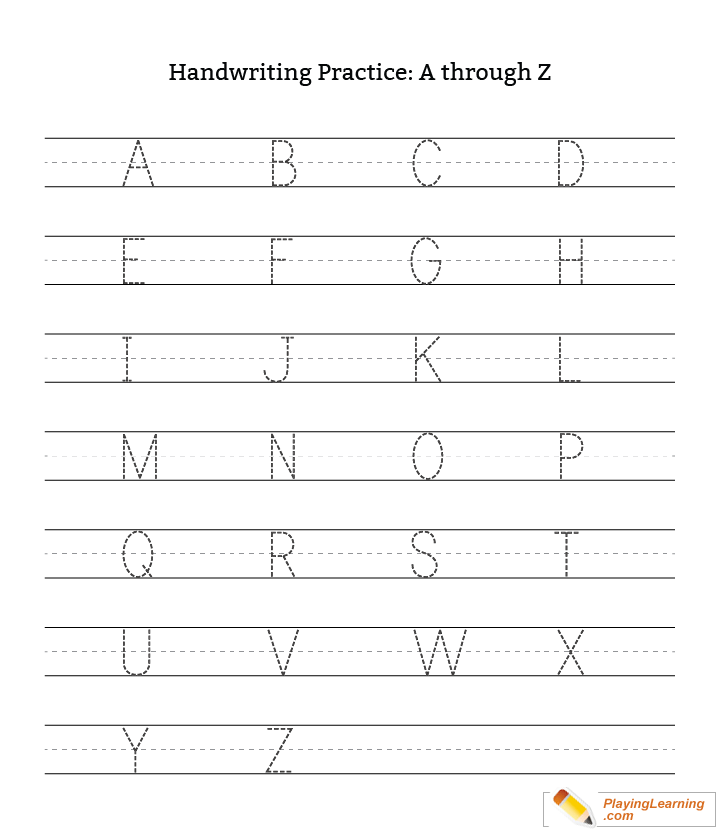 All of the above are quite simple cases," explained linguist - It happens that capital letters play a complex highlighting function in the text when proper names and any proper names are distinguished.
All of the above are quite simple cases," explained linguist - It happens that capital letters play a complex highlighting function in the text when proper names and any proper names are distinguished.
A capital letter certainly raises the status of what a word means in a sentence. And this is not a Soviet invention. In the 20th century, up to a certain point, it was recommended to write pronouns referring to members of the imperial family in all capital letters.
One of the examples that is given in reference books is to write the first word in compound names with a capital letter, and all the rest with a lowercase letter, if they are not proper names. Let's say the Moscow Pedagogical State University - Moscow with capital letters, and the rest with lower case letters. State Duma - State Duma with a capital, Duma with a small one. But there is, according to Shmelev, a serious argument in defense of capital letters: "In all documents of the State Duma, both words are written with a capital letter.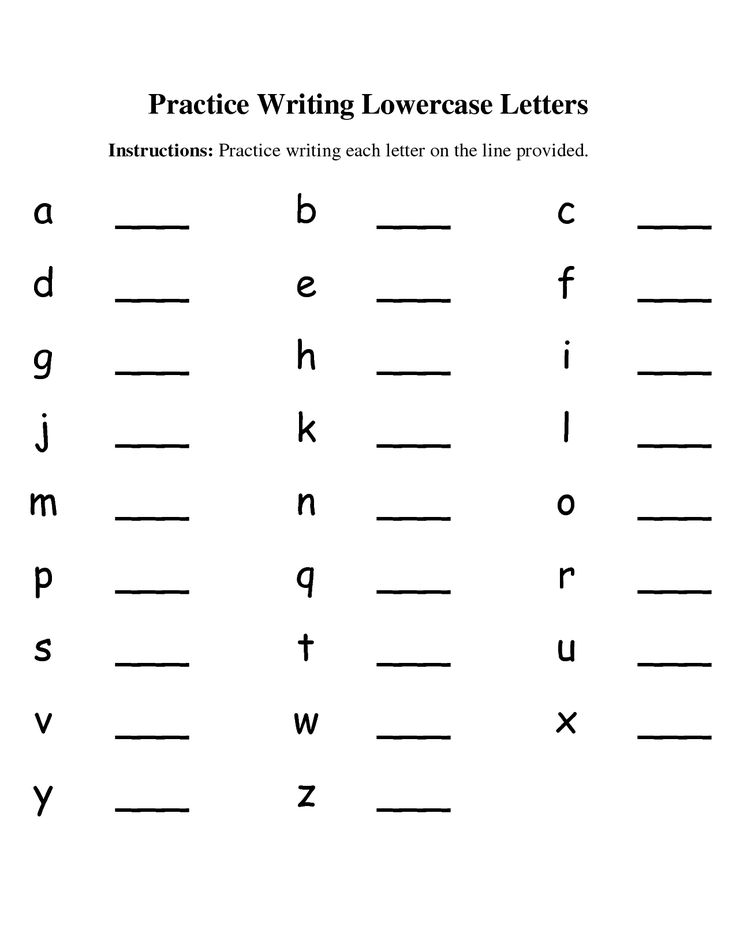 " Therefore, the head of the spelling commission said, "it was decided to make this rule more liberal and indicate that in some cases it is allowed to write two capital letters, our task is to specify the cases exactly. But in general it would be useful to take capital letters even more lightly." What cases were meant?
" Therefore, the head of the spelling commission said, "it was decided to make this rule more liberal and indicate that in some cases it is allowed to write two capital letters, our task is to specify the cases exactly. But in general it would be useful to take capital letters even more lightly." What cases were meant?
"In the rules of Russian spelling of Academician Grot (this is the second half of the 19th century), the rules for using a capital letter with an excretory function took up three and a half pages. In the new reference book, this is already 40 pages. And it would be necessary to formulate strict rules on 3.5 pages, deviation from which it is a mistake, and then give mild recommendations. Say, nouns in such solemn use as: Man, Motherland or Nature - can be written with a capital letter, although this is not necessary at all.
On the other hand, the commission's linguists admit that it is difficult to understand how a word should be written - with an uppercase or lowercase letter.